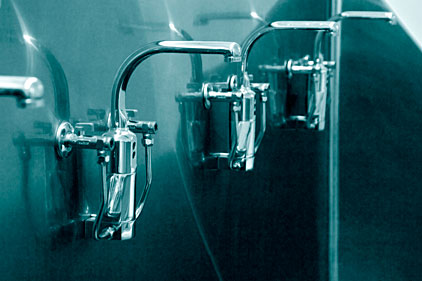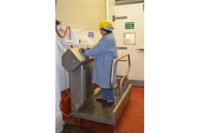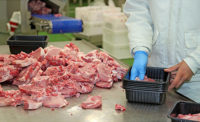 Employee hygiene might seem like common sense, but the issue cannot be taken lightly. Processors maintain rigid protocols in regard to employee hygiene so this area does not become a matter of food safety.
Employee hygiene might seem like common sense, but the issue cannot be taken lightly. Processors maintain rigid protocols in regard to employee hygiene so this area does not become a matter of food safety.
For example, Butterball facilities have implemented monitoring and internal auditing programs ranging from daily observations to microbial validation to ensure the employees’ hygiene training and programs are functioning properly, says Karen Washburn, quality assurance director of technical services at Butterball’s facility in Montgomery, Ill.
A common method to promote and improve employee cleanliness is after washing hands to use hand dip or hand spray sanitizers. Employees then often put on gloves and wash and sanitize the gloves, says Teresa Harris, corporate quality assurance director for Case Farms, Troutman, N.C. Companies also provide smocks to cover employees’ clothing or provide garments to change in to after arriving to work. The use of hair and beard nets is standard practice in the industry to maintain a sanitary environment, she adds.
In addition, boot washers, sanitizers and floor foamers help control bacteria introduced by boots and shoes, Harris says. A dedicated laundry service — or, better yet, the use of disposable aprons, sleeves and gloves — aids in maintaining cleanliness, she says. Frequently changing soiled garments and gloves is very important as well.
“Believing that you have accomplished everything is the major pitfall,” Harris says. “Maintaining sanitary conditions is a daily task.”
Constant employee reminders and retraining, along with monitoring and verification that the systems in place are used in the correct manner, are part of the process of keeping employees on track, she says. Washburn agrees with the importance of continual training and awareness.
“Employees must understand the why along with the direct impact cleanliness has on food safety of the products they help to produce,” she says.
Washburn says one big opportunity for food companies to improve employee hygiene is to communicate clearly with the diverse cultures working within the industry.
“It’s imperative, despite language differences, to communicate effectively with a variety of cultures,” she says. “We need to have translators and documentation in multiple languages to communicate the GMPs and food safety policies so that those policies are fully understood and implemented.”
Control in hygiene is the total result of education and communication with the workforce, Harris agrees.
“Employees must understand how to implement a procedure, the importance of and reasoning behind completing the procedure, and have the knowledge that their actions are important and will be monitored,” she explains. “Once an individual understands what is expected and understands the expectation is to protect our customers as well as themselves, they are willing to do what it takes. Maintaining sanitary conditions is not magic. It comes from day-to-day repetitive practices and encouragement for positive results.”
Harris believes ensuring successful employee hygiene can best be monitored in two ways: visual monitoring and inspection of employee practices and actual equipment along with random swabbing and testing of the equipment used.
Advancing hygiene
The industry is not without the continual pressure of new challenges to employee hygiene as well.
“You must ensure the basics are in place to be prepared for any new pathogen,” Harris says. “You can always build on the basics, but you must have the standard structure in place before going forward.”
New advancements to hand washing, boot washing and other general employee food-safety/sanitation practices are always in the works, which goes for equipment, sanitizers and employee supplies.
“The advancements in automated equipment for hand washing, hand sanitizing and boot washing not only aid the employees, but give the industry more options from which to choose.” Washburn says.
Harris adds that companies need to evaluate new equipment, sanitizers and supplies in the companies’ own environments. Associates should also be involved to ensure companies have the best fit to maintain a consistent end result.
The placement of hand wash sinks and foot foamers along with where employee equipment is distributed is very important as well.
“If there are not sinks in the areas the employees work, they are less likely to wash their hands,” Harris says. “If personal equipment is distributed in an inconvenient area, employees are less likely to exchange soiled garments. The placement is always key. Sanitation systems should be placed in a general layout that follows the flow of the process and is convenient to the traffic pattern of the employees.”




Report Abusive Comment